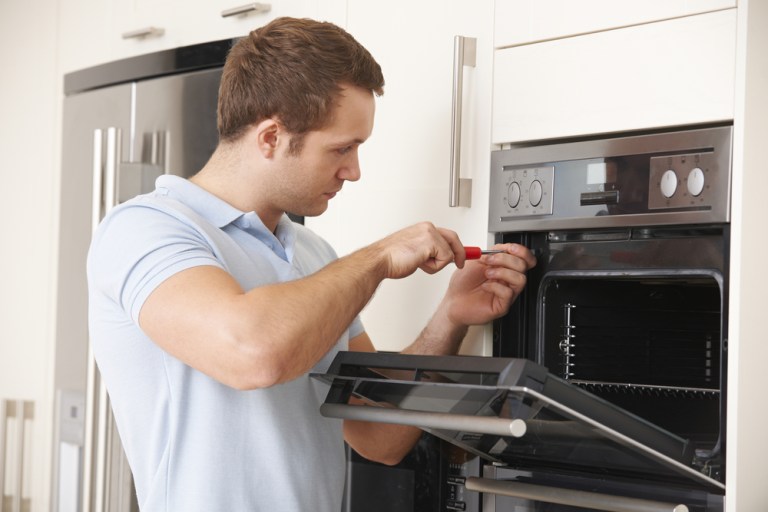
It was usually a weekend joy or an after-work nightmare for the person assigned the task: fixing the broken washing machine or refrigerator, figuring out why the air conditioning system was blowing lukewarm air or replacing a spark plug in the lawn mower.
No matter the mechanical abilities of the do-it-yourself (DIY) repair person (maybe good ol’ dad, quite often mom, sometimes the retired neighbor with their crumpled baseball cap), the task usually involved a visit to the parts store, where clerk and customer would use model or part numbers to navigate their way through thick paper catalogs. The customer might have even crossed their fingers in hopes that the needed item was in stock that day. If not, say goodbye to another Saturday morning.
It’s a cliché, at this point, to say digital has found its way into long-standing retail and service sectors, sometimes transforming industries so much that the old ways of doing things are more likely to be found in history books than daily consumer life. However, the use of digital to make DIY repairs more efficient and easier — as is the case with Repair Clinic, which launched in 1921 as a small appliance repair business and now has a new, more sophisticated eCommerce site — seems a bit different.
DIY Fever
We are supposed to live in a disposable world, even when it comes to appliances more costly than toasters and microwaves — but here’s a site that enables consumers to better handle their own repairs and give extended life to their goods. We are also supposed to be a nation full of white-collar klutzes, people who have, at best, the basic ability to turn a screwdriver and maybe drive a nail without smashing one’s thumb — but here’s a website that shows people how to do repairs on their own, and on machinery that is computerized and more complex than a generation ago.
In addition, here’s a site that could help build a new ecosystem of commerce — but more about that in just a bit.
“The industry has changed a lot in the last 100 years,” Repair Clinic CEO Bob Burke told Karen Webster during a recent PYMNTS interview. So, too, have consumers’ digital expectations.
For instance, people trained by Amazon and other eCommerce operators don’t want to shop via part and model number. They want to be able to search by product and brand. That expectation is part of Repair Clinic’s newest site search tool, which “can give people more relevant and better results” than was the case before, Burke said — and which can save serious time by not having to dig through thick catalogs or other online search engines that have limited ways to seek replacement parts.
The company has crafted a 365-day unconditional return policy, and sells only original manufacturer parts, “no knock-offs or generics,” he said, as part of its push to keep consumers coming back.
Content And Commerce
These days, the best commerce is often associated with strong content — read PYMNTS’ ongoing research and original reporting in the area of contextual commerce for more evidence. That’s the case for Repair Clinic, too.
Burke told Webster that the site has more than 3,500 DIY educational videos in which experts guide consumers on how to do repairs. That’s in addition to some 700 repair-focused articles and other media. “You need content to fix things,” he said, and that holds especially true as “appliances become more advanced.”
This new digital push by Repair Clinic comes as national attention continues to focus on the relative lack of experienced repair technicians, thanks in part to a generation-or-more push to promote four-year colleges over vocational and technical schools. There are various signs that point to a reversal — or, at least, slowing — of that trend.
That said, YouTube — Repair Clinic has more than 200,000 subscribers to its YouTube channel — has essentially functioned as a DIY university for those people willing to pick up tools and get their hands dirty. Consumers on YouTube also interact with each other, and that is especially true for DIY types, who are always sharing tricks, techniques, advice and the scoop on where to buy parts. The new digital improvements undertaken by Repair Clinic seek to use that fact to even more of an advantage.
More Partnerships
Other changes may be in store.
Burke said he could see a day when Repair Clinic integrates with retailers or manufacturers, with the website offering the “deep inventory” that is not always available in even the largest physical stores. “Appliances don’t break only during the week, or between nine to five,” he said.
There is also “a lot of opportunity in the Internet of Things” (IoT), as digital technology connects appliances, cars and other devices — some of which will be able to warn a consumer that preventative maintenance is needed, or even order their parts for repairs. “This is the foundation of where we need to go,” Burke said when talking about the new site and the future.
There will always be a need to serve the DIY market via retail and services, even if those amateur technicians need to call in the pros every so often. Via digital, those homebound mechanics will have more reason to keep getting grease on their skin.